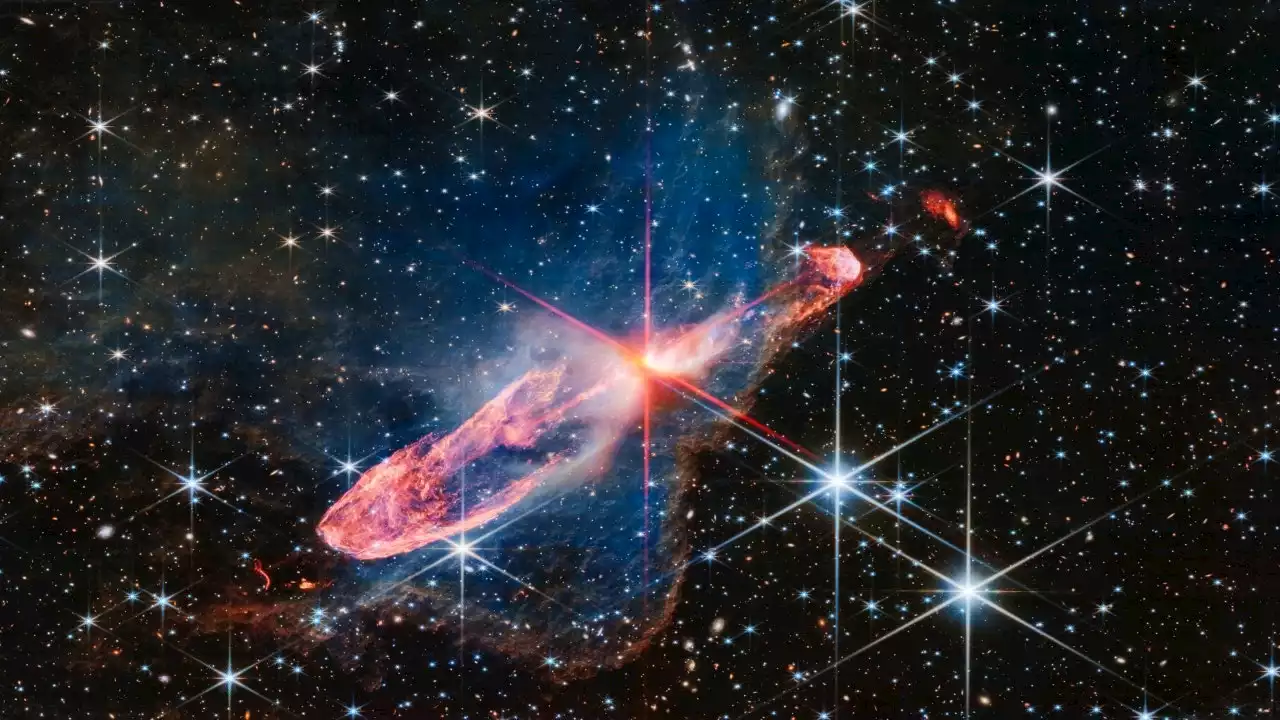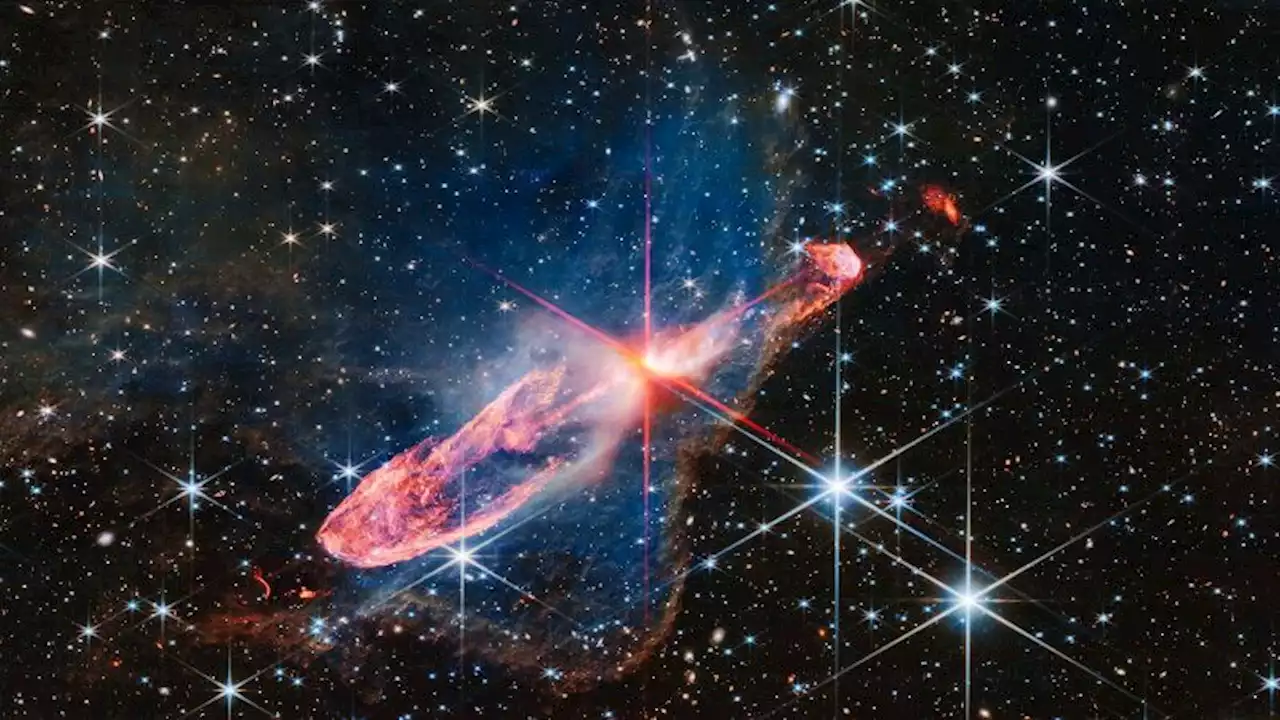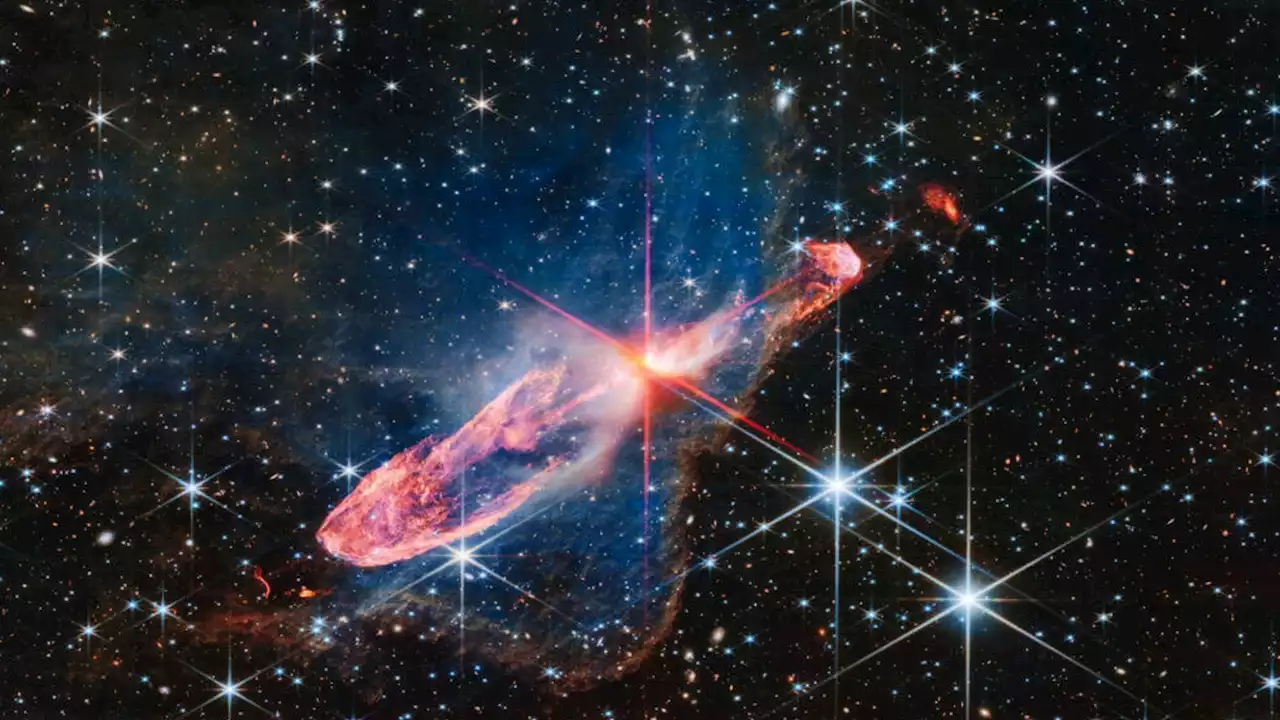Using Webb, scientists have discovered elusive chemical compounds, each on a different Jovian moon, including one that's a common disinfectant.
For the Ganymede survey, the team used Webb’s near-infrared spectrometer to see how light was absorbed by hydrogen peroxide near the moon’s polar regions. The presence of this chemical, which we use on Earth as a disinfectant and bleaching agent, results from the interaction between charged particles around Jupiter and Ganymede, and the ice covering the moon.
The team argues that radiolysis—the process whereby radiation breaks down molecules—is behind hydrogen peroxide production on Ganymede. “Just like how Earth’s magnetic field directs charged particles from the sun to the highest latitudes, causing the aurora, Ganymede’s magnetic field does the same thing to charged particles from Jupiter’s magnetosphere,” Trumbo added. “Not only do these particles result in aurorae at Ganymede, as well, but they also impact the icy surface.
Io’s atmosphere mainly consists of sulfur dioxide , a product of melting sulfur dioxide ice and volcanic eruptions. These volcanoes also produce sulfur monoxide, which is difficult to detect. When in Jupiter’s shadow, however, the sulfur dioxide in Io’s atmosphere freezes onto the surface, leaving behind sulfur monoxide and newly emitted volcanic sulfur dioxide gas. Beneficially, the glowing sulfur monoxide becomes visible when cast within Jupiter’s shadow.
“The link between SO and volcanoes ties in with a hypothesis we had in 2002 to explain how we could see SO emission at all,” de Pater explained. “The only way we could explain this emission is if the SO is excited in the volcanic vent at a temperature of 1,500 Kelvin [ 2,240 degrees Fahrenheit] or so, and that it comes out in this excited state, loses its photon within a few seconds, and that is the emission we see.
Webb continues to astound, whether it’s by making discoveries millions of light years away, or just a few million miles from home.
Brasil Últimas Notícias, Brasil Manchetes
Similar News:Você também pode ler notícias semelhantes a esta que coletamos de outras fontes de notícias.
 Webb Space Telescope takes stunningly detailed infrared image of actively forming starsNASA's James Webb Space Telescope has taken a dazzling new image of a pair of forming young stars in high-resolution near-infrared light located 1,470 light-years away.
Webb Space Telescope takes stunningly detailed infrared image of actively forming starsNASA's James Webb Space Telescope has taken a dazzling new image of a pair of forming young stars in high-resolution near-infrared light located 1,470 light-years away.
Consulte Mais informação »
 Webb telescope discovery may help understand how water got on EarthUsing the James Webb Space Telescope, scientists have detected water vapor within 100 million miles of a star where rocky planets are forming.
Webb telescope discovery may help understand how water got on EarthUsing the James Webb Space Telescope, scientists have detected water vapor within 100 million miles of a star where rocky planets are forming.
Consulte Mais informação »
 Colorful new stars shine in latest Webb telescope image | CNNThe James Webb Space Telescope peered through cosmic gas and dust to spy a pair of actively forming stars and the colorful features they create in the process.
Colorful new stars shine in latest Webb telescope image | CNNThe James Webb Space Telescope peered through cosmic gas and dust to spy a pair of actively forming stars and the colorful features they create in the process.
Consulte Mais informação »
 Actively forming stars captured in stellar photo by Webb telescopeThe two stars still have a few million years to go before they are fully formed, according to NASA.
Actively forming stars captured in stellar photo by Webb telescopeThe two stars still have a few million years to go before they are fully formed, according to NASA.
Consulte Mais informação »
 NASA releases Webb telescope images showing stars formingRepublican presidential rivals, former New Jersey Gov. Chris Christie and former President Donald Trump are in a war of words, not over the 2024 race but about former President Barack Obama.
NASA releases Webb telescope images showing stars formingRepublican presidential rivals, former New Jersey Gov. Chris Christie and former President Donald Trump are in a war of words, not over the 2024 race but about former President Barack Obama.
Consulte Mais informação »
 Webb telescope captures stunningly detailed image of actively forming starsThis tightly bound pair of stars lies roughly 1,470 light-years away in the direction of the Vela Constellation.
Webb telescope captures stunningly detailed image of actively forming starsThis tightly bound pair of stars lies roughly 1,470 light-years away in the direction of the Vela Constellation.
Consulte Mais informação »
